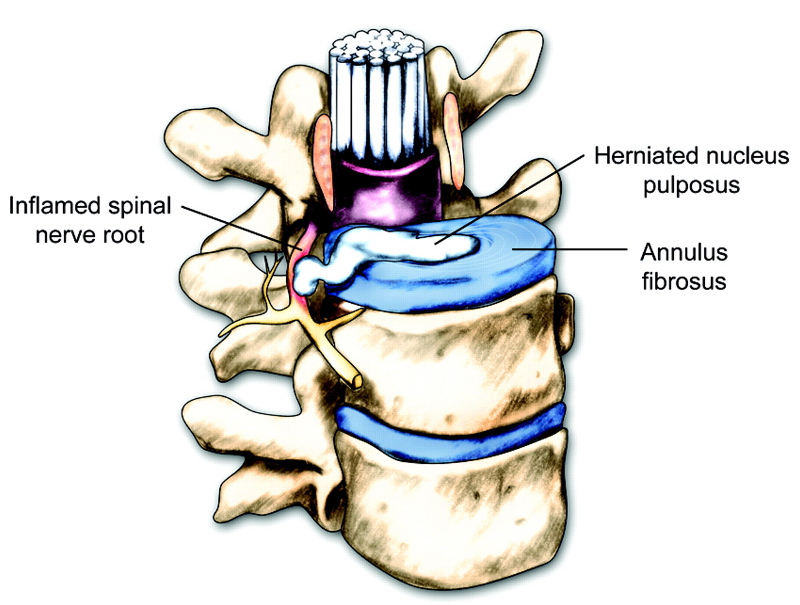El dolor de espalda es extremadamente común y el dolor lumbar (lumbalgia) en particular causa más discapacidad a nivel mundial que cualquier otra afección.[1]Wu A, March L, Zheng X, et al. Global low back pain prevalence and years lived with disability from 1990 to 2017: estimates from the Global Burden of Disease Study 2017. Ann Transl Med. 2020 Mar;8(6):299.
https://www.doi.org/10.21037/atm.2020.02.175
http://www.ncbi.nlm.nih.gov/pubmed/32355743?tool=bestpractice.com
[2]Hartvigsen J, Hancock MJ, Kongsted A, et al. What low back pain is and why we need to pay attention. Lancet. 2018 Jun 9;391(10137):2356-67.
http://www.ncbi.nlm.nih.gov/pubmed/29573870?tool=bestpractice.com
La prevalencia puntual es del 7.5% y la prevalencia durante toda la vida supera el 80%.[1]Wu A, March L, Zheng X, et al. Global low back pain prevalence and years lived with disability from 1990 to 2017: estimates from the Global Burden of Disease Study 2017. Ann Transl Med. 2020 Mar;8(6):299.
https://www.doi.org/10.21037/atm.2020.02.175
http://www.ncbi.nlm.nih.gov/pubmed/32355743?tool=bestpractice.com
[3]Balagué F, Mannion AF, Pellisé F, et al. Non-specific low back pain. Lancet. 2012 Feb 4;379(9814):482-91.
http://www.ncbi.nlm.nih.gov/pubmed/21982256?tool=bestpractice.com
La lumbalgia representa más del 4% de las visitas al servicio de urgencias, lo que lo convierte en una de las diez dolencias más frecuentes.[4]Edwards J, Hayden J, Asbridge M, et al. Prevalence of low back pain in emergency settings: a systematic review and meta-analysis. BMC Musculoskelet Disord. 2017 Apr 4;18(1):143.
https://www.doi.org/10.1186/s12891-017-1511-7
http://www.ncbi.nlm.nih.gov/pubmed/28376873?tool=bestpractice.com
El propósito primario del encuentro inicial es evaluar si los síntomas sugieren una afección subyacente más grave.[5]Oliveira CB, Maher CG, Pinto RZ, et al. Clinical practice guidelines for the management of non-specific low back pain in primary care: an updated overview. Eur Spine J. 2018 Nov;27(11):2791-2803.
https://www.doi.org/10.1007/s00586-018-5673-2
http://www.ncbi.nlm.nih.gov/pubmed/29971708?tool=bestpractice.com
La anamnesis y la exploración proporcionan información útil sobre el patrón del dolor (p. ej., dolor radicular versus lumbosacro), pero rara vez identifican un sitio anatómico preciso.[2]Hartvigsen J, Hancock MJ, Kongsted A, et al. What low back pain is and why we need to pay attention. Lancet. 2018 Jun 9;391(10137):2356-67.
http://www.ncbi.nlm.nih.gov/pubmed/29573870?tool=bestpractice.com
Las etiologías se pueden subdividir en mecánicas, sistémicas o referidas, siendo la mecánica la más común.[6]Deyo RA, Weinstein JN. Low back pain. N Engl J Med. 2001 Feb 1;344(5):363-70.
http://www.ncbi.nlm.nih.gov/pubmed/11172169?tool=bestpractice.com
La mayor parte de los pacientes con dolor lumbar, con o sin ciática, no requieren análisis de laboratorio de forma rutinaria cuando se presentan en un entorno no especializado.[7]National Institute for Health and Care Excellence. Low back pain and sciatica in over 16s: assessment and management. Dec 2020 [internet publication].
https://www.nice.org.uk/guidance/ng59
Un subconjunto de pacientes desarrolla lumbalgia crónica, definido como síntomas persistentes durante >12 semanas.[8]Qaseem A, Wilt TJ, McLean RM, et al. Noninvasive treatments for acute, subacute, and chronic low back pain: A clinical practice guideline from the American College of Physicians. Ann Intern Med. 2017 Apr 4;166(7):514-530.
https://www.doi.org/10.7326/M16-2367
http://www.ncbi.nlm.nih.gov/pubmed/28192789?tool=bestpractice.com
Los factores que aumentan el riesgo incluyen una conducta de mala tolerancia al dolor, signos no orgánicos, deterioro funcional, estado de salud general malo, alteraciones del sueño y comorbilidades psiquiátricas.[9]Chou R, Shekelle P. Will this patient develop persistent disabling low back pain? JAMA. 2010 Apr 7;303(13):1295-302.
http://www.ncbi.nlm.nih.gov/pubmed/20371789?tool=bestpractice.com
[10]Beynon AM, Hebert JJ, Hodgetts CJ, et al. Chronic physical illnesses, mental health disorders, and psychological features as potential risk factors for back pain from childhood to young adulthood: a systematic review with meta-analysis. Eur Spine J. 2020 Mar;29(3):480-96.
http://www.ncbi.nlm.nih.gov/pubmed/31907659?tool=bestpractice.com
[11]Felício DC, Filho JE, de Oliveira TMD, et al. Risk factors for non-specific low back pain in older people: a systematic review with meta-analysis. Arch Orthop Trauma Surg. 2022 Dec;142(12):3633-42.
http://www.ncbi.nlm.nih.gov/pubmed/34021388?tool=bestpractice.com
[12]Amiri S, Behnezhad S. Sleep disturbances and back pain: systematic review and meta-analysis. Neuropsychiatr. 2020 Jun;34(2):74-84.
http://www.ncbi.nlm.nih.gov/pubmed/32166629?tool=bestpractice.com
El médico debe tener en cuenta estos factores de riesgo al aconsejar y tratar a pacientes.


